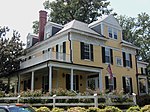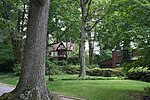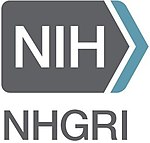The National Institute of General Medical Sciences (NIGMS) supports basic research that increases understanding of biological processes and lays the foundation for advances in disease diagnosis, treatment, and prevention. NIGMS-funded scientists investigate how living systems work at a range of levels, from molecules and cells to tissues and organs, in research organisms, humans, and populations. Additionally, to ensure the vitality and continued productivity of the research enterprise, NIGMS provides leadership in training the next generation of scientists, in enhancing the diversity of the scientific workforce, and in developing research capacity throughout the country.
NIGMS is one of the National Institutes of Health (NIH), the principal medical research agency of the Federal Government. NIH is a component of the U.S. Department of Health and Human Services.
All NIH Institutes and Centers support basic research that is relevant to the diseases, organ systems, stages of life, or populations within their mission areas. In contrast, NIGMS supports fundamental research that does not focus on those specific areas. NIGMS' research mission is aimed at understanding the principles, mechanisms, and processes that underlie living organisms, often using research models. NIGMS also supports the development of fundamental methods and new technologies to achieve its mission. NIGMS-supported research may utilize specific cells or organ systems if they serve as models for understanding general principles. Research with the overall goal to gain knowledge about a specific organ or organ system or the pathophysiology, treatment, or cure of a specific disease or condition will, in most cases, be more appropriate for another Institute or Center. See the NIH listing of Institutes, Centers, and Offices to learn more about their specific missions.
NIGMS also supports research in specific clinical areas that affect multiple organ systems: anesthesiology and peri-operative pain; sepsis; clinical pharmacology that is common to multiple drugs and treatments; and trauma, burn injury, and wound healing.
NIGMS is organized into the following divisions that support research, research training, and capacity building in a range of scientific fields.
Division of Biophysics, Biomedical Technology, and Computational Biosciences
Division of Genetics and Molecular, Cellular, and Developmental Biology
Division of Pharmacology, Physiology, and Biological Chemistry
Division for Research Capacity Building
Division of Training, Workforce Development, and DiversityNIGMS was established in 1962. In Fiscal Year 2017, the institute's budget was $2.6 billion. The vast majority of this money funds grants to scientists at universities, medical schools, hospitals, and other research institutions throughout the country. At any given time, NIGMS supports more than 3,000 investigators and 4,000 research grants—around 11 percent of the total number of research grants funded by NIH as a whole. Additionally, NIGMS supports approximately 26 percent of the NRSA trainees who receive assistance from NIH.
NIGMS produces a number of free science education materials on topics such as cell biology, genetics, chemistry, pharmacology, structural biology, and computational biology. The institute also produces the magazine Findings, which showcases diverse scientists who do cutting-edge research and lead interesting lives.










